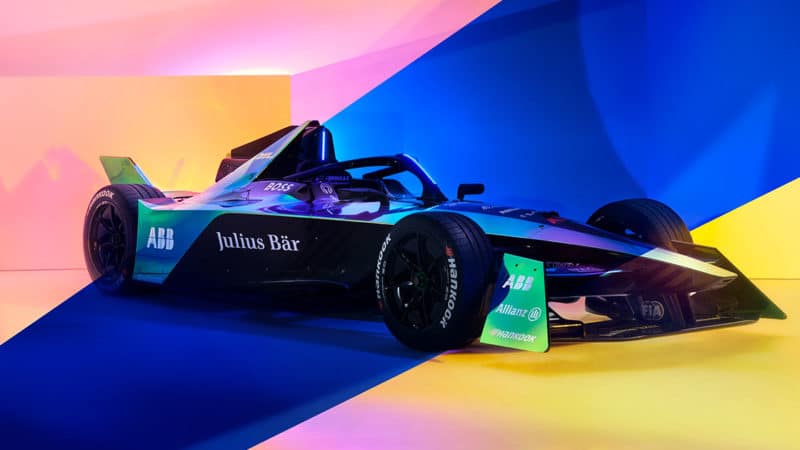The horsepower is massively increased for Gen3, with a combined 600kW between the front and rear axle motors – not in drive capacity but in what it recovers to the battery, a crucial system for any electric car.
The Gen3 battery, designed by Williams Applied Engineering, is set to be smaller and lighter than either previous generation, despite a massively increased power output and input. Formula E’s Gen3 adds regeneration from the front axle as well as the rear, with the goal for 40% of race energy to come from regenerative braking.
A more extreme implementation is that the car will not use mechanical or hydraulic brakes on the rear wheels, instead relying on regeneration. In theory, this is much better for tyre wear and potentially for a reduction in tyre particulate emissions (which are particularly generated by braking events) but does also pose the question of what a driver will do if their powertrain fails at full speed.

The car will use its regen system to brake, but safety questions remain unanswered
The car would coast to a stop theoretically but of course there are sometimes unavoidable walls ahead, especially on a Formula E circuit. Drivers seem broadly positive about the machine, though; Gen2’s improvement on Gen1 was clear but there was plenty of mileage to go in stretching what an electric race car can do.
In theory, at least, that is what FE’s Gen3 sets out to do with massive regenerative capacities pushing far beyond any current road car and fast-charging seeking range and performance in ways that go beyond the current EPA standard.


